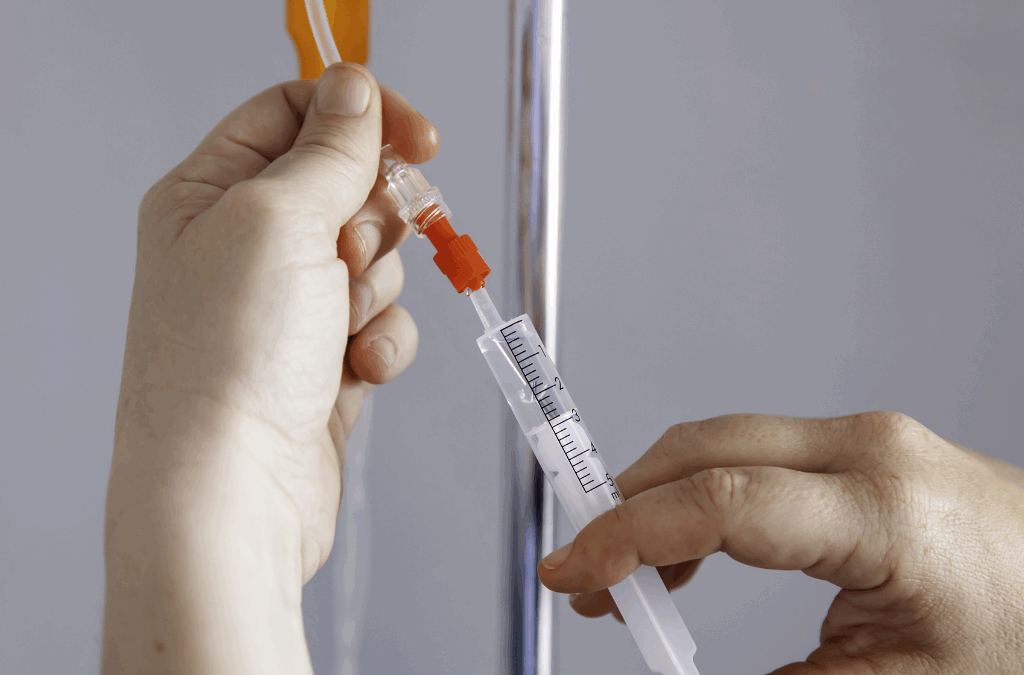Key Takeaways
- Ketamine offers rapid relief for treatment-resistant depression.
- Clinical research supports its effectiveness, showing significant symptom reduction after just a few sessions.
- Combining ketamine with therapy and healthy lifestyle changes can enhance and prolong its antidepressant effects.
Treatment-resistant depression (TRD) is a challenging condition, leaving many people feeling hopeless after conventional antidepressants and therapy sessions fail to provide relief. For those who have tried multiple medications and therapeutic approaches without success, ketamine therapy offers an innovative treatment approach. This therapy, backed by substantial clinical evidence, provides rapid symptom improvement, particularly in severe cases where traditional treatments have been ineffective.
What “Treatment-Resistant” Really Means
Treatment-resistant depression is typically defined as a major depressive disorder that doesn’t respond to at least two different antidepressant medications at adequate dosages and durations. Approximately one-third of individuals diagnosed with depression meet these criteria. For these patients, depressive symptoms, including persistent sadness, loss of interest, fatigue, and impaired cognitive functioning, continue despite diligent treatment efforts.
Common characteristics of TRD:
- Persistent depressive symptoms despite medication
- Severe impacts on quality of life and daily function
- Increased risk of suicide and severe psychological distress
- Difficulty finding effective treatment despite multiple attempts
TRD often requires therapeutic approaches beyond traditional antidepressants, highlighting the importance of exploring treatments such as ketamine therapy.
How Ketamine Works Inside the Brain
Ketamine was originally developed and approved as an anesthetic medication decades ago, primarily used in surgery and pain management. More recently, researchers discovered ketamine’s profound effects on mood regulation at low doses.
Ketamine operates differently from traditional antidepressants. Instead of targeting serotonin or norepinephrine directly, ketamine influences glutamate pathways in the brain, specifically by blocking NMDA receptors. This triggers a surge of glutamate activity, activating brain-derived neurotrophic factor (BDNF). Increased BDNF promotes neuroplasticity, the brain’s ability to reorganize and form new neural connections.
Effects of ketamine therapy on the brain include:
- Rapid enhancement of neuroplasticity
- Improved neural connectivity
- Restoration of damaged neural pathways linked to mood regulation
- Reduction in inflammation associated with chronic depression
Because of these unique mechanisms, ketamine provides relief within hours or days, compared to weeks or months required for conventional antidepressants.
What the Research Shows
Rapid relief. A 2024 randomized study found a single IV ketamine infusion cut depression scores by half within one day for many participants, with gains lasting a week.
Durability with repeat doses. Repeated infusions, often two or three a week for two weeks, extend that benefit and push more patients into remission.
Maintenance unanswered. A 2024 re-analysis suggests people who don’t respond by the third infusion rarely respond later, a clue for early stopping rules.
Overall, evidence now covers thousands of patients and points to fast, clinically meaningful relief with an acceptable safety profile.
Safety, Side Effects, and Monitoring
Ketamine therapy, administered professionally at appropriate doses, is generally safe and well-tolerated. However, awareness of potential side effects is essential.
Common side effects include:
- Mild nausea
- Temporary dizziness
- Short-lived dissociative effects
- Slight elevation in blood pressure
Rare side effects:
- Severe dissociative reactions
- Heightened anxiety or agitation
To mitigate risks, Avid Sports Medicine conducts thorough screenings, employs precise dosing, and closely monitors patients during and after treatment.
Contraindications for ketamine therapy include:
- Active psychosis or mania
- Severe cardiovascular conditions
- Pregnancy or breastfeeding
- Uncontrolled hypertension
- Substance abuse involving ketamine or alcohol
Blending Ketamine with Therapy and Lifestyle
Maximizing the benefits of ketamine therapy often involves combining treatment with psychotherapy and lifestyle adjustments. Enhanced neuroplasticity after ketamine infusions provides a window of opportunity for effective therapy and lasting behavioral change.
Integrated approaches include:
Psychotherapy: Cognitive Behavioral Therapy (CBT), Dialectical Behavior Therapy (DBT), or supportive therapy sessions following ketamine treatment can reinforce positive emotional patterns.
Mindfulness and Stress Reduction: Mindfulness-based stress reduction (MBSR) helps consolidate mood improvements.
Healthy Lifestyle Practices: Regular exercise, quality sleep, nutritional improvement, and avoiding substances like alcohol can significantly prolong and stabilize benefits.
Studies indicate that patients combining ketamine therapy with psychotherapy demonstrate superior long-term outcomes compared to medication alone.
Who May Benefit, And Who Should Wait
Good candidates
- Adults 18–70 with moderate-to-severe TRD
- Bipolar depression currently in the depressive phase (with mood-stabilizer on board)
- Patients with urgent suicidal ideation needing rapid relief
- Chronic pain patients whose depression flares with pain spikes (ketamine can ease both)
Hold or defer
- Uncontrolled high blood pressure (> 160/100 mm Hg)
- Active psychosis or mania
- Severe substance use disorder involving ketamine, alcohol, or stimulants
- Pregnancy or chest-feeding (insufficient safety data)
Frequently Asked Questions
How soon will I know if ketamine helps?
Most responders feel lighter within the first two sessions. Lack of any shift by infusion three predicts poor outcome; your team will reassess then.
Will I have visuals?
Some people see colors or gentle scenes. It’s not mandatory for benefit.
Can ketamine replace my current antidepressant?
Possibly. Many patients taper doses after a successful series, but changes happen slowly and under psychiatric guidance.
Is it addictive?
Risk is low in a clinic setting with spaced doses and regular reviews. Cravings seen in recreational use rarely appear when therapy is doctor-directed.
What about long-term maintenance?
Boosters happen when early warning signs return. Some people need none for six months; others schedule one every quarter.
Take the First Step Towards Relief with Ketamine Therapy
Ketamine therapy provides hope for individuals struggling with treatment-resistant depression, offering rapid symptom relief and improved quality of life where conventional treatments fall short. With clinical support, a favorable safety profile, and growing acceptance in clinical settings like Avid Sports Medicine, ketamine therapy represents a significant advancement in depression care.
To explore if ketamine therapy is right for you, schedule a comprehensive evaluation at Avid Sports Medicine today.

